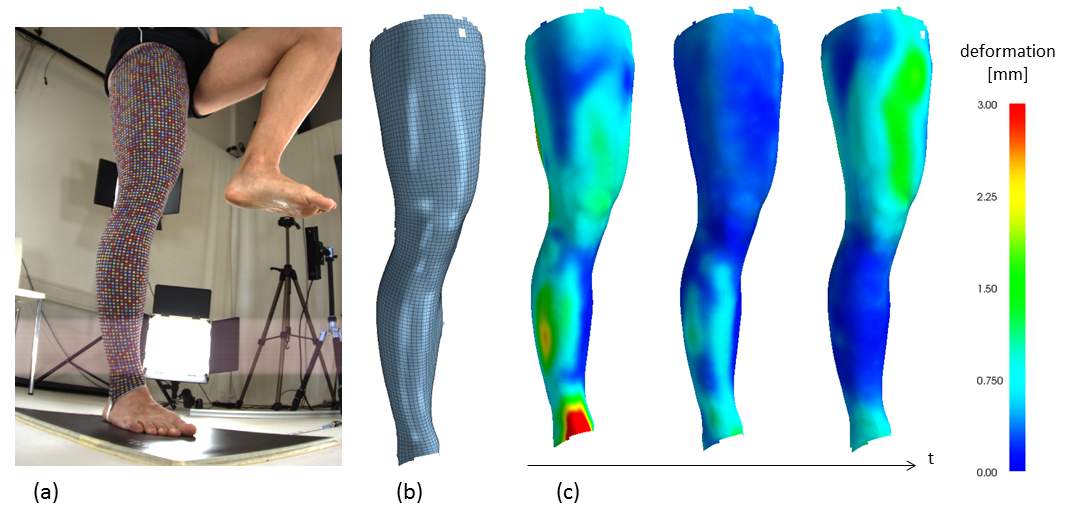Towards estimation of muscle activity patterns for balance assessment from surface deformations in motion
Metainformationen
Conf. Proc. of Neuromechanics, 4th-6th Oct., Heidelberg, Germany. 2016
Abstract
Tests for postural stability are widely used for balance assessment in rehabilitation and geriatrics, e.g. as indicator for the risk of falling. Maintaining body balance requires constant coordinated activation of a multitude of muscles. Their contractions induce deformation of the skin surface that depend on muscle location, size and strain. Recent computer vision techniques are able to reconstruct such subtle changes of 3D skin geometry and allow estimation of muscular effort. The authors aim to develop reliable measurement methodologies and analysis algorithms that assess postural stability of the lower body on the basis of correlations between skin surface changes and muscle activity patterns. The authors have developed a multi-sensor system to synchronously record surface data in motion with a multi-camera system as well as EMG data of 7 muscles of the upper and lower leg and plantar pressure distribution. 4 subjects were recorded performing several balance exercises, such as one leg stances. Preliminary results, obtained with tight fit multi-colored garments (cf. Fig. 1, a), clearly show the bulging of muscles on the 3D surface (b) during one leg stance. Deformations of the 3D surface at different moments in time (c) are consistent with the muscle areas of e.g. Peroneus and Tibialis Anterior. Compared to the widely used analysis of the center of pressure (COP) the novel multi-sensor system combines 3D surface geometry of the skin in high spatio-temporal resolution with plantar pressure distribution and EMG data for the first time. A comprehensive evaluation of the experimental results is current work of the research group to be published. Surface deformations, as extension to COP changes, promise precise insights into the temporal and spatial strategies for muscle control during balance tests and may lead to improved assessment and therapy planning.